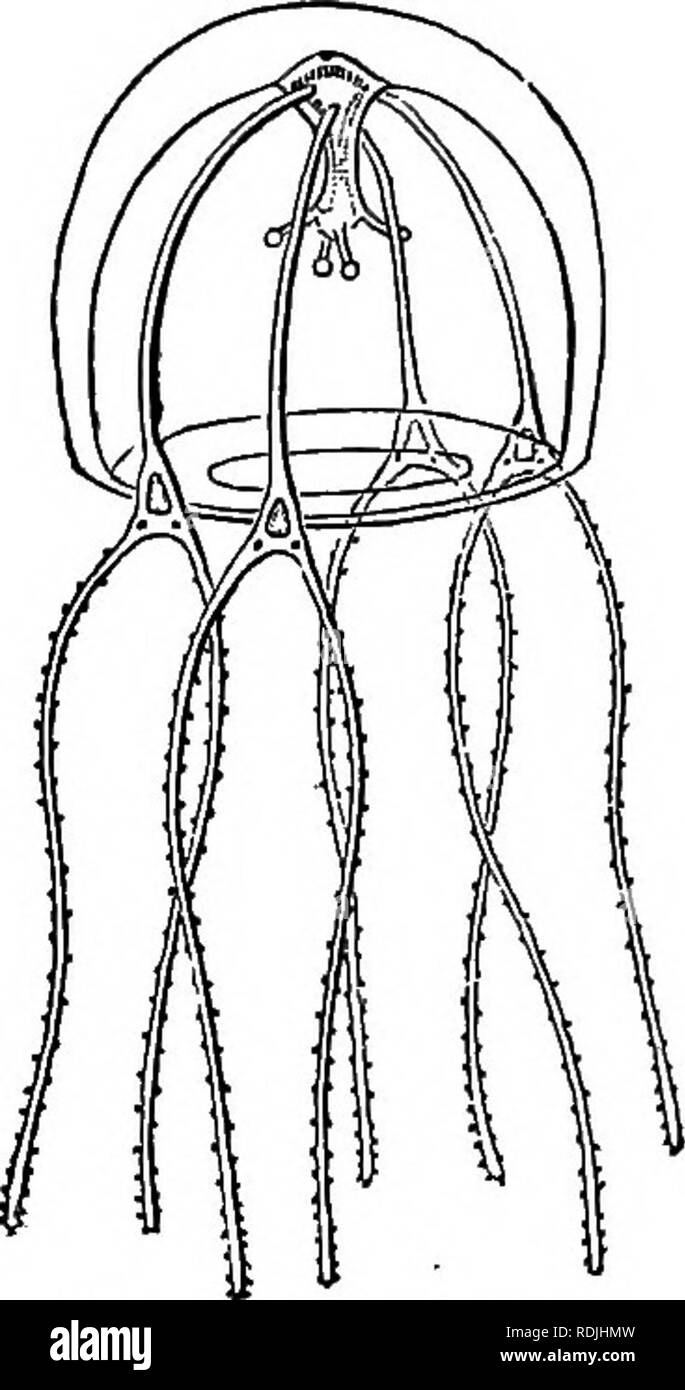. The beauties of nature and the wonders of the world we live in. Natural history; Physical geography; Astronomy. ON ANIMAL LIFE 109 Fig. 4 represents the Medusa or free form of this beautiful species. If we pass to another great group of Zoophytes, that of the Jelly-fishes, we have a very similar case. For our first knowl- edge of the life-history of these Zoophytes we are indebted to the Nor- wegian naturalist Sars. Take, for instance, the common Jelly-fish (Me- dusa aurita) (Fig. 5) of our shores. The egg is a pear-shaped body (i), covered with, fine hairs, by the aid of which it swims abou

Image details
Contributor:
The Book Worm / Alamy Stock PhotoImage ID:
RDJHMWFile size:
7.2 MB (224 KB Compressed download)Releases:
Model - no | Property - noDo I need a release?Dimensions:
1148 x 2177 px | 19.4 x 36.9 cm | 7.7 x 14.5 inches | 150dpiMore information:
This image is a public domain image, which means either that copyright has expired in the image or the copyright holder has waived their copyright. Alamy charges you a fee for access to the high resolution copy of the image.
This image could have imperfections as it’s either historical or reportage.
. The beauties of nature and the wonders of the world we live in. Natural history; Physical geography; Astronomy. ON ANIMAL LIFE 109 Fig. 4 represents the Medusa or free form of this beautiful species. If we pass to another great group of Zoophytes, that of the Jelly-fishes, we have a very similar case. For our first knowl- edge of the life-history of these Zoophytes we are indebted to the Nor- wegian naturalist Sars. Take, for instance, the common Jelly-fish (Me- dusa aurita) (Fig. 5) of our shores. The egg is a pear-shaped body (i), covered with, fine hairs, by the aid of which it swims about, the broader end in front. After a while it attaches itself, not as might have been expected by the posterior but by the anterior extremity (2). The cilia then dis- appear, a mouth is formed at the free end, tentacles, first four (j), then eight, and at length as many as thirty (4), are formed, and the little creature resembles in essentials the freshwater polyp (Hydra) of our ponds.. Fig. 4. — BougaiDvillea fruticosa. Medusa-form.. Please note that these images are extracted from scanned page images that may have been digitally enhanced for readability - coloration and appearance of these illustrations may not perfectly resemble the original work.. Lubbock, John, Sir, 1834-1913. New York, London, Macmillan and Co.